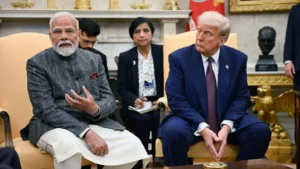The Small Cap Swing Trader Alert Archive
Below you'll find The Small Cap Swing Trader setups stacked up and ordered chronologically.Nvidia Earnings Beat Expectations
Nvidia Earnings Beat Expectations, But Stock Falls
Nvidia earnings beat expectations in the company’s latest quarterly report, but shares slipped in extended trading despite the upbeat results and guidance. The chipmaker continues to dominate the artificial intelligence (AI) infrastructure market, though investor enthusiasm appears to have already priced in much of the growth story.
Headline Numbers
For the second quarter of fiscal 2026, Nvidia reported adjusted earnings of $1.05 per share, topping analyst estimates of $1.01 per share. Revenue reached $46.74 billion, beating the consensus forecast of $46.06 billion. Net income jumped 59% year-over-year to $25.78 billion.
Guidance for the October quarter was equally strong, with management forecasting revenue of $54 billion (±2%). Analysts were expecting around $53.1 billion, confirming that Nvidia earnings beat expectations both in reported results and forward outlook.
AI and Data Center Growth
The data center segment remained the growth engine, generating $41.1 billion in revenue—up 56% from the previous year. Large cloud providers accounted for about half of that business. The rollout of Blackwell chips is accelerating, with sales up 17% from the first quarter. Nvidia also noted that its new product line has already reached $27 billion in cumulative sales.
Despite geopolitical setbacks—such as the inability to ship H20 chips to China, which cost the company $4.5 billion in write-downs—Nvidia still managed to benefit from redirecting $180 million in H20 inventory to customers outside China. Even so, Nvidia earnings beat expectations without factoring in those lost sales, highlighting the resilience of its AI-driven demand.
Why the Stock Fell
While results were strong, the stock declined after hours. Traders cite “buy the rumor, sell the news” dynamics and concerns about stretched valuations as key factors. With Nvidia now central to the AI buildout, expectations are sky-high, and even strong beats can trigger profit-taking. This illustrates how Nvidia earnings beat expectations but still may not satisfy investors who anticipate extraordinary growth.
Implications for Traders
- Short-term volatility: The post-earnings drop may provide trading opportunities around support and resistance levels.
- Options trades: Elevated implied volatility around the report could create setups for straddle/strangle strategies.
- Sector sympathy moves: Semiconductor peers like AMD and TSMC often react in tandem to Nvidia’s results.
- Macro signal: Because Nvidia is central to AI infrastructure, its performance often drives broader tech and Nasdaq sentiment.
For traders, the lesson is clear: Nvidia earnings beat expectations, but sentiment and positioning matter just as much as fundamentals. Watching follow-through price action is critical.
Bottom Line
Nvidia earnings beat expectations on both revenue and profit, underscoring its dominance in AI and data center growth. Still, the stock’s post-report decline is a reminder that when valuations run ahead of fundamentals, even great news may not spark a rally. Traders should stay alert for opportunities in both Nvidia and the broader semiconductor space as the AI trade evolves.
Snowflake Stock Jumps On Earnings
Snowflake Stock Jumps on Earnings: What Traders Need to Know
Snowflake stock jumps on earnings after the cloud-based data platform delivered results that far exceeded Wall Street’s expectations. Shares surged more than 12% in after-hours trading as investors responded positively to both the company’s quarterly performance and its forward guidance.
Strong Financial Performance
Snowflake reported second-quarter adjusted earnings of $0.35 per share, handily beating analyst estimates of $0.27 per share. Revenue came in at $1.14 billion, surpassing the consensus forecast of $1.09 billion. Management also guided third-quarter product revenue between $1.124 billion and $1.13 billion, slightly above expectations. This momentum confirms that Snowflake stock jumps on earnings when strong demand for data-driven solutions and AI infrastructure is in play.
AI Demand as a Growth Catalyst
The company continues to benefit from the surge in artificial intelligence adoption. Businesses increasingly rely on Snowflake’s platform to organize and process data that feeds into AI models. This trend positions Snowflake as a key player in the broader AI ecosystem. While competition from Databricks and others remains fierce, the latest results suggest that demand is strong enough to support multiple winners in this space. For now, Snowflake stock jumps on earnings tied to these structural shifts in the market.
Risks and Market Context
Despite the positive results, traders must weigh the risks. Analysts have raised concerns about a potential AI bubble, with some industry leaders warning that investor enthusiasm could outpace actual returns in the real world. Snowflake’s valuation remains steep compared to its legacy data storage peers, which means volatility may persist even as its fundamentals improve. Still, Snowflake stock jumps on earnings because investors remain confident in its long-term role as a data leader.
Implications for Traders
For traders, the earnings beat creates several actionable opportunities:
- Momentum plays: With shares breaking higher in after-hours trading, short-term traders may look for continuation moves in the next sessions.
- Support/resistance zones: The $225–$230 area now becomes a key level of resistance. A breakout could fuel another leg higher.
- AI sector sympathy trades: Other AI-linked names, including cloud infrastructure and semiconductor stocks, may benefit from Snowflake’s strong report.
- Volatility hedges: Options traders could take advantage of elevated implied volatility following the news.
In short, Snowflake stock jumps on earnings not only because of its strong financials but also because it reinforces the market’s belief in AI-driven growth. Traders should view this as both an opportunity and a cautionary signal, given the risks of overexuberance.
Bottom Line
The latest report confirms that Snowflake stock jumps on earnings when the company demonstrates both strong execution and clear AI demand tailwinds. Traders should closely monitor continuation moves, sector-wide effects, and potential reversals if AI sentiment shifts.
Kohl’s Earnings Beat and Stock Surge
Kohl’s Earnings Beat and Stock Surge: What Traders Should Watch Now
A 20% pop puts Kohl’s earnings beat and stock surge in the spotlight, but leadership uncertainty and declining sales keep the turnaround thesis on trial.
Why Kohl’s earnings beat matters
Kohl’s delivered a surprise this quarter that vaulted shares more than 20% in a single session. The rally occurred despite comparable sales declines and ongoing leadership changes.
| Metric | Reported | Reference |
|---|---|---|
| Earnings per share (adjusted) | $0.56 | $0.29 expected |
| Revenue | $3.35B | $3.32B expected |
| Net income | $153M ($1.35/share) | $66M ($0.59/share) a year ago |
| Comparable sales (YoY) | -4.2% | — |
| Inventory (YoY) | $3.0B | Down 5% |
| FY25 net sales outlook | -5% to -6% | -5% to -7% prior |
| FY25 EPS (adjusted) | $0.50 to $0.80 | $0.10 to $0.60 prior |
Leadership turmoil could cap earnings
Kohl’s has seen three CEOs in three years. Until permanent leadership is established, the stock’s multiple may remain constrained despite an episodic Kohl’s earnings beat and stock surge.
Trading implications
Short-term setups
- Watch 350 support and 355 resistance for intraday range trades.
- The pinning effect near $352.5 could persist until expiration.
Intermediate-term view
- Without stable leadership, a single-day Kohl’s earnings beat and stock surge may fade.
- Potential catalysts: margin stabilization, exclusive assortments, Sephora rollout.
Bottom line on the Kohl’s
The market cheered a clean beat, but durable upside needs consistent execution and clearer leadership. Treat this as a tradable event within a still-uncertain turnaround.
Nvidia earnings and the future of the AI trade
Nvidia Earnings: What Traders Should Watch and How AI’s Future Hangs on Cash Flow
NVDA’s report is a referendum on the AI trade—watch China guidance, supply–demand balance, and hyperscaler capex. The catch: free cash flow across Big Tech is straining just as AI spending soars.
Why This Print Matters
- China exposure: Guidance on ex‑China vs. indirect channels (e.g., Southeast Asia hyperscalers) will shape demand assumptions.
- Supply–demand balance: Data‑center revenue is expected to rise ~57% y/y; watch commentary on the Blackwell ramp and early visibility into Rubin for 2026.
- Hyperscaler capex: The “AI arms race” continues, but cash generation is tightening—concentration risk remains high.
Cash Is the Bottleneck: Free Cash Flow Is Rolling Over
Big Tech’s AI buildout is running into a hard constraint: free cash flow. While the shovel‑seller (Nvidia) continues to mint cash,
hyperscalers are shouldering enormous capex bills with monetization still emerging. Here’s a comparison of free cash flow over the last two reported quarters vs. the year‑ago period:
| Company | FCF (Last 2 Qtrs) | FCF (Year‑Ago) | Δ (Billions) | % Change |
|---|---|---|---|---|
| Microsoft (MSFT) | $45.9B | $44.3B | $1.6B | 3.6% |
| Amazon (AMZN) | $-7.7B | $11.7B | $-19.4B | -165.4% |
| Alphabet (GOOGL) | $24.3B | $30.3B | $-6.0B | -19.9% |
| Meta Platforms (META) | $20.1B | $24.0B | $-3.9B | -16.4% |
| Oracle (ORCL) | $-2.9B | $7.1B | $-9.9B | -140.3% |
| Nvidia (NVDA) | $41.7B | $26.2B | $15.5B | 59.2% |
Source: FactSet; figures from user‑provided excerpt. Values reflect two‑quarter sums. Negative values indicate cash burn.
Implications for Trading
Day Traders
- Expect secondary moves: Initial reactions can whipsaw. The cleaner setups often appear on the post‑call drift as guidance is digested.
- Sympathy baskets: Track MSFT, AMZN, GOOGL, META and semi peers (e.g., AMD). Watch liquidity pockets around VWAP, prior day high/low, and volatility bands.
- Risk first: Use pre‑defined stops; size down into the print and scale only on confirmation (range breaks, volume confirmation, and tape).
Intermediate‑Term Traders
- Two‑track thesis: NVDA’s near‑term strength vs. hyperscaler FCF strain. Fade squeezes if capex discipline shows up; press longs if spend stays intact.
- Position structure: Consider pairs (NVDA long vs. a basket hedge) or options structures (collars, calendars) around capex commentary inflection.
- China watch: Any pathway to resume China revenue (direct or indirect) extends AI’s runway; a prolonged freeze compresses 2025–26 expectations.
AI in Trading: Today & What’s Next
AI already shapes intraday flow through machine‑driven liquidity, pattern recognition, and micro‑structure analysis.
The next wave will deliver: (1) hyper‑personalized playbooks tuned to each trader’s edge, (2) cross‑market predictive signals from unstructured data,
and (3) behavioral copilots that enforce discipline by detecting impulsive actions in real time.
Actionable Playbook for the Print
- Define invalidation first (max risk per trade, circuit breakers, news‑halt rules).
- Bracket the event with key levels (prior H/L, overnight range, pre‑market impulse, anchored VWAPs).
- Trade reaction, not prediction: wait for post‑headline structure (flag/coil/failed break) with volume confirmation.
- Rotate through the sympathy complex (semis → hyperscalers → AI software) and compare relative strength vs. QQQ.
Nvidia Earnings AI Stock Trading
Nvidia Earnings: A $4 Trillion AI Test for Wall Street
Why Nvidia’s Earnings Matter
With a market capitalization of $4 trillion, Nvidia is not only a leader in artificial intelligence infrastructure but also a bellwether for the broader US equity market.
Its rally of more than 30% this year has been a major driver of the S&P 500’s 9% gain, cementing Nvidia’s role as the “locomotive of the AI train.”
Investors expect revenue of $46 billion for the July quarter — a 53% year-over-year increase, though well below the triple-digit growth seen in 2023.
Guidance and commentary on AI spending, cloud customer demand, and China chip sales will be the proper drivers of market reaction.
Valuation Concerns and Macro Backdrop
Nvidia trades at nearly 40 times forward earnings, far above the Nasdaq 100’s 28 times multiple and the long-term average of 22 times.
This leaves little room for disappointment. Recent cautionary notes from MIT and OpenAI’s Sam Altman have reminded investors that the AI growth curve may face challenges.
Still, Microsoft, Google, Amazon, and Meta have committed to over $350 billion in AI infrastructure spending this year, suggesting continued demand for Nvidia’s GPUs.
Key Watchpoints for Traders
- Revenue and Guidance: The consensus is $46B in revenue and strong AI-related guidance. Whisper numbers may be even higher — any shortfall could spark volatility.
- China Exposure: Traders will watch commentary on Nvidia’s H20 chips and the unconventional licensing deal with the Trump administration.
- Valuation Pressure: At these multiples, even a “beat” could trigger selling if forward guidance isn’t compelling.
- Macro Sensitivity: Nvidia’s report may sway not just tech but the entire equity complex, much like an economic data release.
Implications for Day Traders
1) Expect High Intraday Volatility
Nvidia earnings days often produce sharp overnight gaps and wide intraday ranges.
Gap-and-go vs. gap-fill setups around VWAP and opening range extremes will be in play both tomorrow and Thursday.
2) Sympathy Trades
Monitor mega-cap peers — MSFT, AMZN, META, GOOGL — and AI-levered names like SMCI, ARM, PLTR.
Strong or weak Nvidia results often trigger sector-wide sympathy moves, offering multiple opportunities for scalping and momentum trading.
3) Options Activity
Implied volatility is elevated going into earnings.
Watch for IV crush in options the morning after the release, as making short-term directional bets becomes higher risk unless timed with precision.
Implications for Intermediate-Term Traders
1) Trend Continuation vs. Exhaustion
A strong beat and bullish guidance could reinforce Nvidia’s leadership in the AI trade, supporting continuation of the uptrend toward new highs.
A disappointment could trigger a corrective phase across tech, especially given stretched valuations.
2) Sector and Index Weight
Nvidia’s size makes it a dominant force in the S&P 500 and Nasdaq 100.
Intermediate-term traders should monitor whether strength (or weakness) in Nvidia translates into broader index momentum.
3) Macro + Micro Crossroads
As Morgan Stanley notes, both Nvidia’s fundamentals and the macro outlook matter at this stage.
Intermediate-term investors should consider whether the momentum behind AI spending offsets broader economic headwinds, such as tariffs, inflation, or rising interest rates.
What to Watch Next
- Nvidia’s Q2 earnings call commentary on AI demand and supply chain.
- Any updates on China chip licensing and geopolitical risks.
- Broader market reaction — does Nvidia lift or sink the S&P 500?
India Russian Oil US Tariffs
India Holds Firm on Russian Oil as US Tariff Threats Loom
Key Developments
- The Trump administration is preparing to impose punitive tariffs of up to 50% on Indian exports in response to New Delhi’s ongoing purchases of Russian crude oil.
- A planned US trade delegation to India was canceled, signaling a hardening of Washington’s stance.
- India continues to import roughly 1 million barrels/day of Russian oil, down from its peak earlier this year, while exploring alternative suppliers.
- Indian officials have strengthened their long-standing ties with Moscow, emphasizing both commercial and strategic rationales.
- India’s trade with the US is valued at $130 billion annually, far higher than the $68 billion trade with Russia—yet Russia remains its largest defense and energy partner.
Why It Matters Geopolitically
India is effectively challenging Washington’s attempt to limit Russian revenues while balancing its need for affordable energy and military supply chains.
Moscow has been a consistent partner since the Cold War, and despite the US being India’s largest trading partner, New Delhi is reluctant to abruptly shift its energy dependence.
Analysts note that a tariff standoff could mark a new phase in the India-US relationship, which has oscillated between cooperation and confrontation.
Strategic trust with Russia remains a safety net for India, contrasting with what many in New Delhi see as “cyclical” ties with the US.
Energy Market Impact
A reduction in Russian crude imports by India would force refiners to look at higher-cost suppliers, potentially increasing India’s import bill by
$3–5 billion per year. This could ripple into global energy prices, especially in Asia’s refined products markets.
US, Middle Eastern, and West African suppliers are already being considered as alternative sources.
For now, refiners remain cautious but have not made a definitive pivot away from Russia. Market watchers expect shipment data for August to clarify whether a trend of rerouting is beginning.
Implications for Day Traders
1) Energy Volatility
- Watch crude benchmarks like WTI and Brent—tariff headlines can trigger sharp price swings intraday.
- Indian refiners (e.g., Reliance, ONGC) and global oil majors may see sympathy moves tied to shipping data and tariff announcements.
2) Trade & Tariff Plays
- Indian ADRs listed in the US (Infosys, Wipro, HDFC Bank) may face tariff-linked selling pressure if the levies take effect.
- Conversely, US exporters with exposure to India could see near-term weakness if retaliation is signaled.
3) Tactical Setups
- Mark the opening range on tariff-deadline days—watch for gap-and-go vs. gap-fill behavior in energy names and India ADRs.
- Track headline risk closely: diplomatic visits, cancellations, or statements from Modi/Trump can all swing tape dynamics.
- ETFs to monitor: EPI (WisdomTree India), XLE (Energy), IEMG (Emerging Markets).
4) Risk Management
- Expect above-average ATR in crude and India ADRs during tariff windows.
- Scale down size near tariff announcement hours; avoid chasing halts or headline bursts.
What’s Next
- Confirmation of the timing and scope of US tariff implementation.
- Potential Indian countermeasures range from WTO appeals to targeted retaliation.
- Putin’s planned visit to India later this year could reinforce energy and defense ties with Moscow.
Eli Lilly Orforglipron Diabetes Trial Weight-Loss Pill
Eli Lilly’s Orforglipron Hits Target in Diabetes Trial—Oral GLP-1 Battle with Novo Nordisk Heats Up
Key Takeaways
- 10.5% average weight loss in overweight/obese patients with Type 2 diabetes over ~72 weeks on orforglipron; GI side effects broadly in line with injectables.
- Earlier readout in non-diabetics showed ~12.4%, at the lower end of expectations—still clinically meaningful but shy of leading injectables.
- Novo Nordisk has already submitted an oral Wegovy (oral semaglutide) application; phase 3 signaled ~15% weight loss at top dose in obesity.
- Regulatory path: Lilly expects to file in 2025, with consensus pointing to a potential FDA decision in 2026.
- Why pills matter: Easier to manufacture and distribute than cold-chain injectables, expanding global access and potentially lowering COGS.
Context: The Oral GLP-1 Market Is About Scale
No next-generation oral obesity drug has yet received U.S. approval. If approved, pills could lift capacity constraints and broaden adoption far beyond what cold-chain injectables alone can reach.
Lilly’s latest diabetes-population win both validates efficacy in a harder-to-treat cohort and keeps pace with Novo’s timeline.
Efficacy Snapshot
- Orforglipron (LLY): ~10.5% in T2D; ~12.4% in non-diabetics; dose-dependent responder rates (≥10% and ≥15% loss) are meaningful.
- Oral semaglutide (NVO): ~15% in obesity at the highest dose in phase 3; under FDA review.
Safety: GI events remain the class effect; discontinuations at higher doses are a watch-item but generally manageable within GLP-1 norms.
Implications for Day Traders
1) Tape Dynamics & Sympathies
- Leaders: LLY and NVO tend to move inversely in response to incremental data. Expect headline-sensitive gap/drive behavior around filings, FDA milestones, and cross-trial comps.
- ETFs: XLV/IBB/XBI can register spillover flows on big GLP-1 news, offering smoother liquidity for scalps when single-name spreads widen.
2) Intraday Setups to Consider (education only)
- Premarket Plan: Mark the news-gap range and the first 5–15 minute opening range. Treat initial VWAP tests as decision points; failed reclaims can offer continuation entries.
- Relative Strength/Weakness: Compare LLY vs NVO vs sector ETF. A clean RS divergence into VWAP/ORH/ORL often gives tight-risk rotations.
- Option Structure: Elevated IV after headlines favors credit structures on mean-revert days; momentum days favor debit calls/puts aligned with trend. Watch IV crush post-press/analyst calls.
- Catalyst Ladder: Staggered data drops (top-line → detailed endpoints → filing acceptance → PDUFA date) can create multi-day trade sequences.
3) Risk Controls
- Respect ATR and news-day volatility. Avoid oversizing into halts or headline bursts.
- Use time-based stops around failed VWAP/OR retests; don’t let thesis drift as liquidity normalizes after the opening hour.
What to Watch Next
- FDA Filing & Acceptance (LLY): Headlines confirm submission, followed by acceptance, often resetting positioning.
- Label Scope & Dosing (NVO): Final oral Wegovy label—dose, titration, warnings—could impact reprice of comps and market share assumptions.
- Manufacturing/Access: Any commentary on pill capacity and pricing will shape the medium-term narrative beyond topline efficacy.





